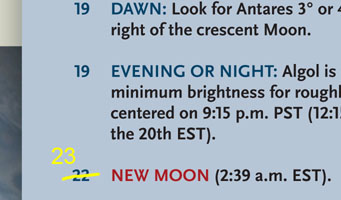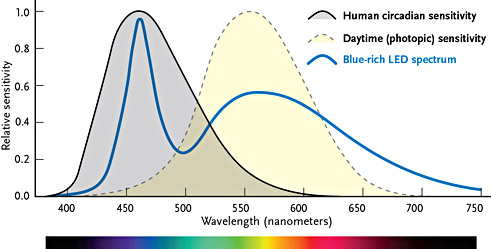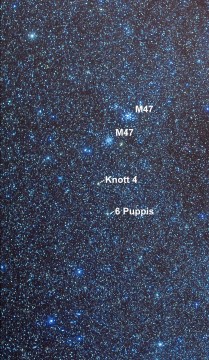 The editors of Sky & Telescope make every effort to provide accurate information, but errors do sometimes slip through. We correct all mistakes online as well as printing corrections in the magazine. So if you see something questionable in the magazine, check below to see if it's a known problem.
The editors of Sky & Telescope make every effort to provide accurate information, but errors do sometimes slip through. We correct all mistakes online as well as printing corrections in the magazine. So if you see something questionable in the magazine, check below to see if it's a known problem.
This article lists all known errors in issues of Sky & Telescope for 2015. See also the errata listings for other years.
January 2015
Page 33: The Atmospheric Dispersion Corrector shown is manufactured by Astro Systems Holland, not Pierro-Astro, and is available at www.astrosystems.nl.
Page 38: R Monocerotis is not an old, evolved star but rather a T Tauri variable — a pre-main sequence star still partially enshrouded in its parent molecular cloud.
February 2015
Page 33: The computer simulation of the PSR 1257+12 system found that, after the progenitor star’s death, roughly 0.001 solar mass of material (not 1,000 solar masses) could remain bound to the pulsar.
Page 45: In the Binocular Highlights finder chart, the star Atlas is incorrectly labeled as Alcyone.
Page 56: In the Deep-Sky Wonders column, Abell 24 is incorrectly placed north of Zeta Canis Majoris; it is north of Zeta Canis Minoris.
 Page 57: Download an updated version of the "Objects in Canis Major and Canis Minor" table.
Page 57: Download an updated version of the "Objects in Canis Major and Canis Minor" table.
Page 58: Douglas’s Triangle is not the three stars in the middle of the image but the three stars that combine to create the top “star” in that triangle. A zoomed-in image appears at right. A finder chart is available for download.
Page 85: Despite our enthusiasm, the March 2015 issue goes on newsstands January 27th, not December 30th as stated.
March 2015
Page 30: The observatory portrayed is the Large Synoptic (not Synaptic) Survey Telescope.
Page 50: The current orbital position angle of Sirius B is 78° (measured counterclockwise from north), not 282°.
Page 79: The sunspot photo was taken on October 25th, not October 31st as stated.
April 2015
Page 65: SOFIA’s operations contract is with Universities Space Research Association (USRA), not Association of Universities for Research in Astronomy (AURA).
May 2015
Page 21: Most of Harvard College Observatory’s photographic plates are 8 by 10 inches (not 8 by 14 inches) in size.
Page 30: Claudius Ptolemy championed a geocentric (not heliocentric) model of the solar system.

Page 40: In the graph of light sensitivity versus wavelength, the black curve represents human circadian sensitivity to specific wavelengths, not our eyes’ scotopic (dark-adapted) response to light, which peaks at 507 nm. The corrected version is at right.
June 2015
Page 55: For the perigee and apogee dates in the table of Moon data, the respective diameters of the lunar disks should be switched.
July 2015
Page 18: Walter Haas was 97, not 85, when he died on April 6th.
Page 38: The Biblical citation in the upper caption should be Isaiah 40:26.
Pages 56, 60, 63, 65: A production error affected finder charts on these pages. The corrected charts are available as PDFs, which may be downloaded for free by clicking on the appropriate link here: pg. 56 (Deep-Sky Wonders); pg. 60 (Going Deep); pg. 63 (Backyard Sky: Summer); and pg. 65 (Backyard Sky: Summer).
Page 59: In the caption, the identifications of galaxies NGC 5905 and 5908 were inadvertently switched. They are labeled properly in the chart on page 60.
October 2015
Page 32: The historical record concerning NGC 7325 and NGC 7326 suggests that a misidentification exists in many contemporary sources. The objects described in the article and identified in the image on page 38 as NGC 7325 and 7326 are, perhaps, more correctly identified as PGC 59291 and Z 514-066 (CGCG 514-066). The “real” NGC 7325 is an object to the SW of the core of NGC 7331 and NGC 7326 is a double star to the west of 7331.
Page 56: To access the online Catalog of Optically Visible Open Clusters and Candidates (2002), use the full URL (including the "www"): http://www.astro.iag.usp.br/ocdb.
December 2015

Alan Dyer</i<
Page 4: Mercury's perihelion precession, from all causes, is about 574 arcseconds per century. The stated 43 arcseconds per century refers only to the residual (anomalous) shift due to relativistic effects. Also, the label in the illustration should state that Mercury's perihelion precesses 0.2° (not 2°) per century.
Page 34: The star labeled 6 Puppis is actually double star Knott 4; 6 Puppis is about 1° below and slightly to the right of Knott 4 (see photo at right).
Page 38, 44: The predicted peak of the Geminid meteor shower is about 18h Universal Time on December (not August) 14, 2015.
Page 49: The date and time of for the Moon's perigee should read 9h UT on December 21st.
Page 70: The long trail across a star-field image ascribed to a Perseid meteor instead resulted from a pass overhead by the International Space Station.
 0
0

Comments
You must be logged in to post a comment.